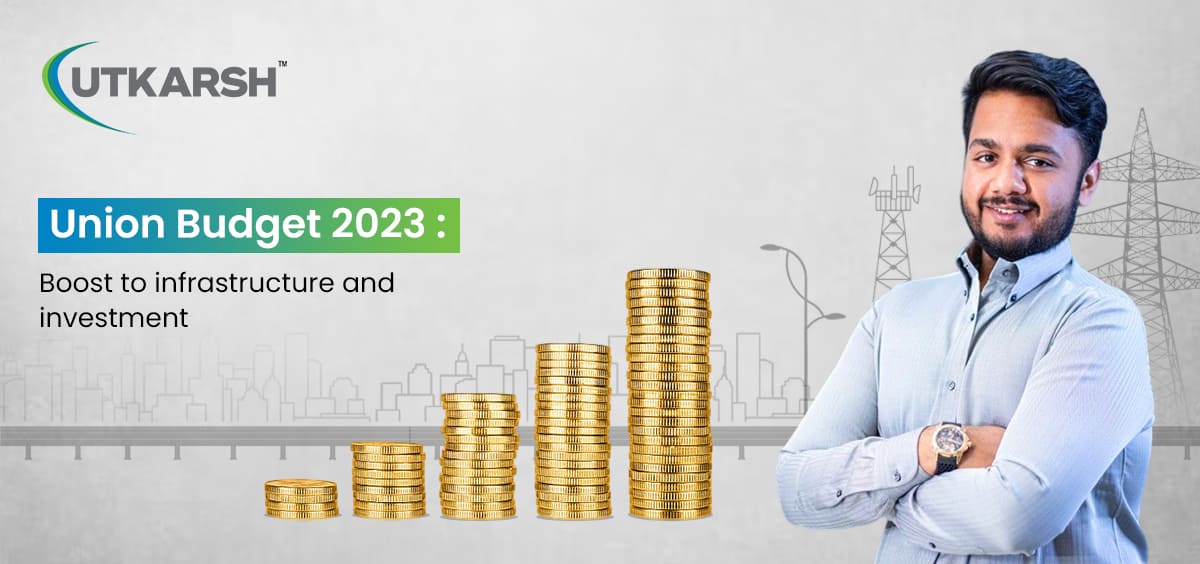Budget 2023: Boost to infrastructure and investment

In the Union Budget 2023, Finance Minister Nirmala Sitharaman outlined seven main targets under the ‘Saptrishi’ mantras, with infrastructure and investment predominating.
The clubbing of infrastructure and investments in one of the seven priorities is one of the primary features, along with the second and third highest allocations for Highways and Railways at Rs 2.70 lakh crore and Rs 2.41 lakh crore, after the highest allocation for Ministry of Defence.
The increase in overall capital expenditure, the increased outlay for PMAY, the setting up of the Urban Infra Development Fund and the record capital allocation for the railways will also help achieve the aim of improved infrastructure.
With the vision to build ‘sustainable cities of tomorrow’, states and cities will be encouraged to take up urban planning reforms.
Efforts will be made for the efficient usage of land resources, adequate resources for urban infrastructure, transit-oriented development, enhanced availability and affordability of urban land, and opportunities for all.
Among the initiatives being taken are the development of the Infrastructure Finance Secretariat to encourage increased private investment in infrastructure, including trains, highways, urban infrastructure, and power.
A panel will also be set up to suggest the categorization and finance system.
The initiatives include continuation of the 50-year interest free loan to state governments for a year to spur investment in infrastructure.
There is also the focus on reviving 50 additional airports, heliports, water aerodromes and advance landing groundings for improving regional air connectivity.
One hundred essential transport infrastructure projects for last and first-mile connections for ports, coal, steel, fertiliser, and food grains industries have been highlighted to significantly boost India’s logistics industry.
Moreover, the PM Gati Shakti National Master Plan portal is now fully operational having the Department for Promotion of Industry & Internal Trade as the key entity for the seven engines: Roads, Railways, Airports, Ports, Mass Transport, Waterways and logistics infrastructure.
The director of Utkarsh India, Utkarsh Bansal, lauded the budget,“ It is very encouraging to see the investments that have been planned by the government in the various fields of infrastructure. This will not only add to the growth of the country, but also allow industries like ours which directly contribute towards infrastructure to grow.”
Utkarsh India is one of the backbones of Indian infrastructure across highways, railways, water supply and construction through various product verticals.
Among other points are National Highways Authority of India’s launch of the Pune-Bengaluru Greenfield Expressway Project at an estimated cost of Rs 500 billion, approval of Somasila- Siddheshwaram cable-stayed-cum-suspension bridge project (NH-167K) at an estimated cost of Rs 10,825.6 million and the Jabalpur Ring Road Project at a cost of Rs 36,000 million.
Among the road projects, funds were approved and sanctioned for the Phagwara-Hoshiarpur Four Laning Road Project (NH-344B) and the Balikuda-Mulakani Two Laning Road Project (NH-55).
The revamp of the New Delhi Railway Station, Ahmedabad Railway Station, and Chhatrapati Shivaji Maharaj Terminus Mumbai, at Rs 100 billion was also approved.
Under Project Sampark, the Centre sanctioned funds of Rs 5,624.5 million for the Akhnoor-Tain Br-Poonch two/four-laning road project (NH-144A) as well.
The Union Government approved the implementation of the Saraighat rail-cum-road overbridge project connecting the north bank with Guwahati on the south bank of the Brahmaputra River in Assam, at an estimated cost of Rs 9,967.5 million.
There are also plans to construct new transmission lines at a cost of to meet the 2030 target of 500 GW renewable energy capacity.
With states accounting for 20-25 per cent of the overall infrastructure spend, the Budget has also considered an increase of over 30 per cent in allocation to the scheme for special assistance to states for capital investment.
The government plans to set up digital public infrastructure as an open source, open standard and inter operable public good to enable inclusive, farmer-centric solutions, and give a boost to the agricultural sector.
It will also continue to focus on fiscal support towards digital payments.